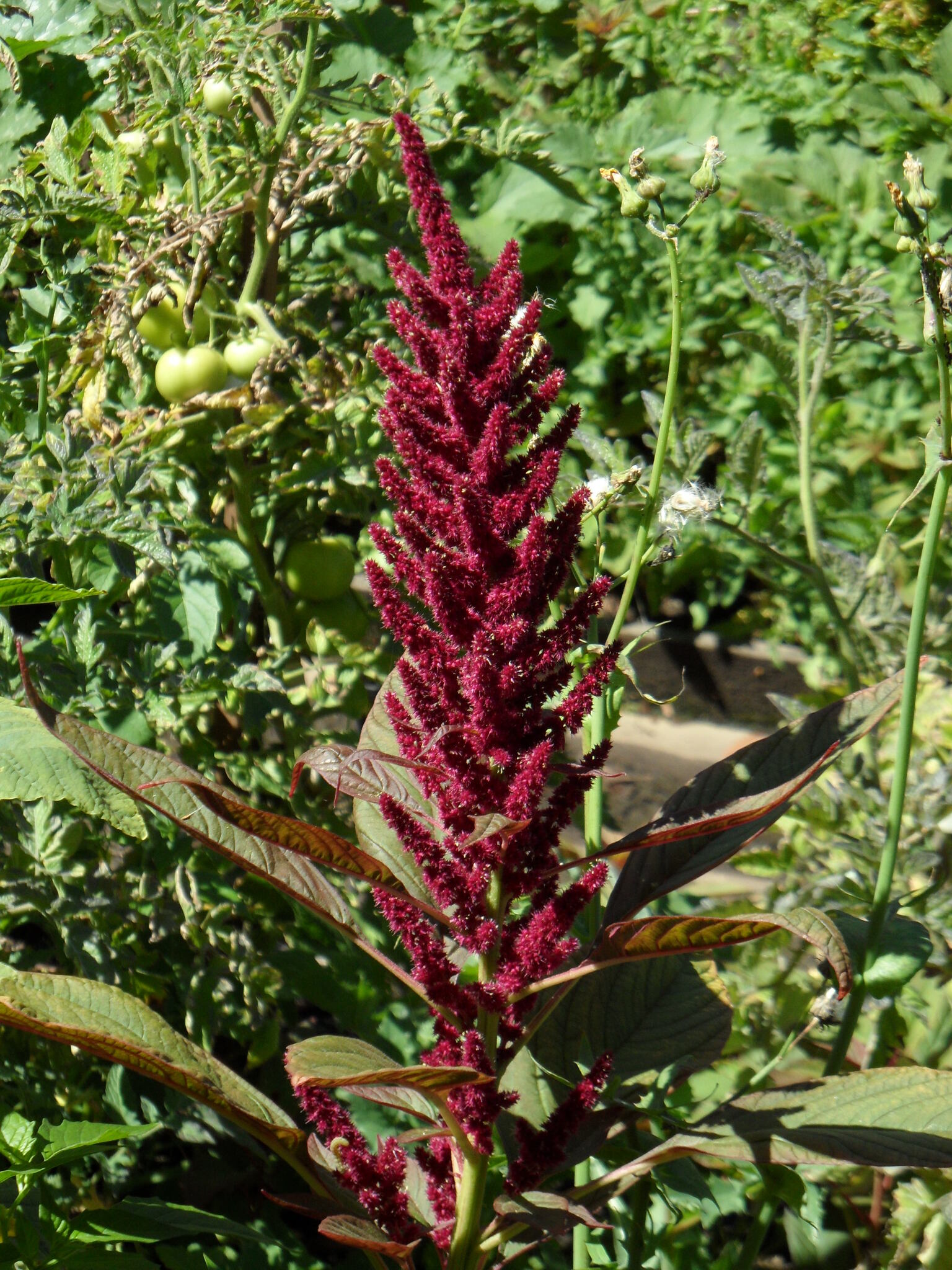
Greek a—not, marantos—withering, referring to the occasional use of plants for everlasting flowers.
Annual or perennial, often weedy, herbs. Leaves alternate, stalked and often brightly coloured in cultivated plants. Sexes on different plants. Flowers small in highly condensed clusters or spikes, brightly coloured, axillary or more or less terminal with petal-like bracts and 2 bracteoles. Perianth segments (1-)3-5, papery. Stamens 1-5, free; mostly summer and early autumn. Ovary 1-chambered; styles 3. Fruit a 1-seeded capsule.
A number of species have become naturalised in Australia as weeds of roadsides and disturbed areas, these include A. cruentus L., Redshank, from America and Asia with flowers in green, densely branched clusters, and A. hybridus L., Slim Amaranth, a cosmopolitan plant with erect reddish or green spikes, sometimes grown as a grain crop in the tropics. In cultivated plants the leaves and spikes are often red. The female flowers have bracts that are longer than the styles. Both these species are naturalised in Australia and some authorities do not recognise them as separate species.
Some species occasionally grown as leaf vegetables.
About 50 species mostly tropical and subtropical, few temperate (1 native species in Victoria, 10 naturalised in Australia).
Sauer (1950, 1955, 1967), Eliasson (1988).
Source: (1997). Amaranthaceae. In: . Horticultural Flora of South-eastern Australia. Volume 2. Flowering plants. Dicotyledons. Part 1. The identification of garden and cultivated plants. University of New South Wales Press.
